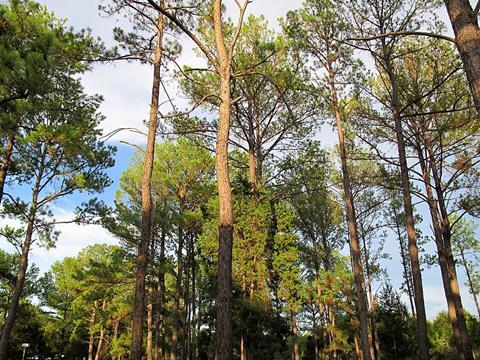The researchers demonstrated that NIR spectroscopy, when paired with advanced chemometric modeling, can classify resistant and susceptible trees with up to 69% accuracy—even before symptoms appear.

Loblolly pine is the most widely planted timber species in the U.S., producing nearly 60% of the nation’s wood supply. However, its productivity is continually threatened by Cronartium quercuum f. sp. fusiforme, the fungus responsible for fusiform rust. This pathogen alternates between oaks and pines in its complex life cycle, infecting young trees and forming galls that deform stems, reduce wood quality, and often lead to mortality.
READ MORE: How artificial intelligence and machine learning are transforming agriculture’s future
READ MORE: Drone-based tech deployed to detect subtle signs of rice blast disease
While deploying genetically resistant families has curbed the disease, visual phenotyping remains subjective. Subtle symptoms may be missed, and environmental variability often obscures true resistance. These limitations underscore the need for objective, field-deployable tools to evaluate disease resistance in tree breeding programs. Based on these challenges, researchers explored whether vibrational spectroscopy could non-destructively identify resistance traits in asymptomatic trees.
Powerful tool
A study (DOI: 10.1016/j.plaphe.2025.100066) published in Plant Phenomics on 6 June 2025 by Simone Lim-Hing’s team, University of Georgia, provides tree breeders with a powerful, non-destructive tool for improving disease resistance screening and advancing precision forestry.
In this study, researchers applied two vibrational spectroscopy-based methods—near-infrared (NIR) and Fourier-transformed mid-infrared (FT-IR) spectroscopy—to evaluate loblolly pine (Pinus taeda L.) resistance to fusiform rust. Phloem and needle samples were collected from 34 pine families across eight test sites in Alabama, Florida, and Georgia, and analyzed using a handheld NIR spectrometer and a benchtop FT-IR device.
Chemometric and machine learning approaches, including support vector machines (SVM) and sparse partial least squares discriminant analysis (sPLS-DA), were used to classify trees as resistant or susceptible based on their spectral profiles. The NIR analysis involved 275 samples, while the FT-IR analysis included 234 phloem samples after processing losses.
Spectral variation
Non-metric multidimensional scaling (NMDS) and PERMANOVA tests revealed that site effects strongly influenced spectral variation, but resistance classes were not clearly separated. Despite this, models built from NIR spectra achieved higher predictive accuracy than those based on FT-IR data.
The best-performing NIR model, using data from the 30 most resistant and 30 most susceptible trees, achieved 81.5% training accuracy and 68.7% testing accuracy, whereas FT-IR models reached up to 65% testing accuracy. Both modeling approaches showed reduced performance when intermediate phenotypes were included. Phloem tissue consistently provided better discrimination than needle tissue, highlighting its closer link to disease defense mechanisms.
Several recurring spectral bands—5678, 5800, 5814, 5827, 5841, and 6222 cm⁻¹—were identified as key indicators of resistance-associated chemistry. Overall, the study demonstrates that NIR spectroscopy offers a reliable, non-destructive, and field-deployable tool for early detection of disease resistance, providing tree breeders with an efficient method to enhance selection accuracy and reduce the costs and errors associated with traditional visual phenotyping.
Disease resistance in real time
By integrating NIR spectroscopy into breeding programs, foresters can objectively assess disease resistance in real time, supplementing traditional visual methods.
The lightweight, field-deployable device allows rapid sampling of hundreds of trees, minimizing labor-intensive evaluations and the risk of undetected infections.
Beyond fusiform rust, this proof-of-concept demonstrates how spectroscopy, combined with machine learning, can transform forestry phenotyping. The approach aligns with the growing movement toward precision forestry—leveraging data-driven technologies to sustain healthy, resilient forests amid rising biotic stresses.







No comments yet